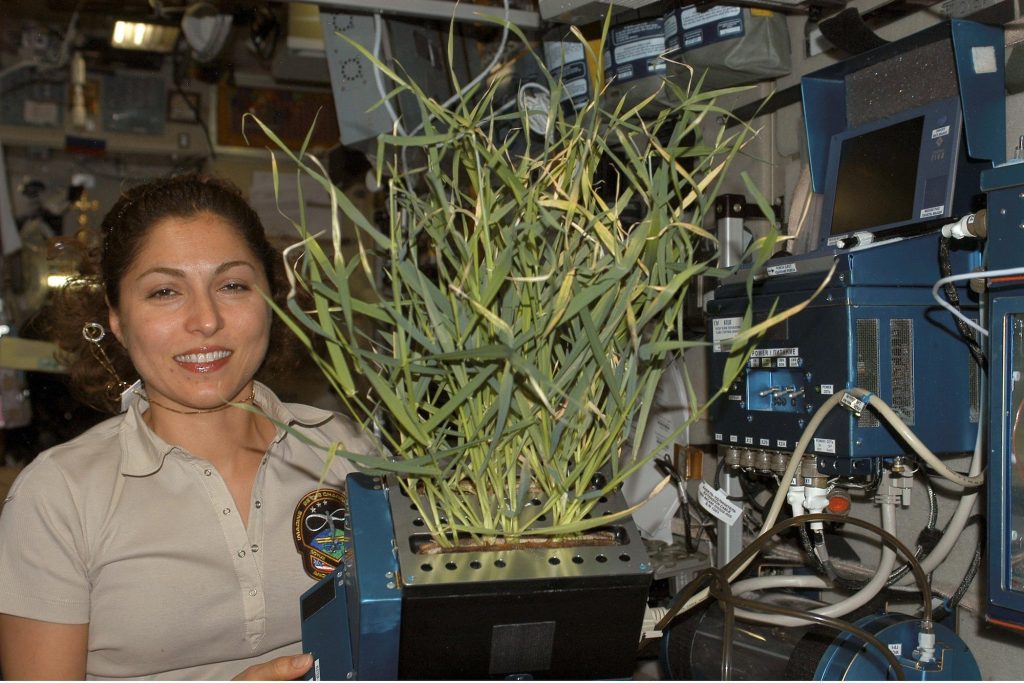Potluck time! Russian scientists have verified that several plants grown aboard the International Space Station are safe to eat, Russian news agency RIA Novosti reports.
The space-grown edibles include peas, dwarf wheat and Japanese leafy greens. They look great and not at all weird, one of the scientists working on the project, Margarita Levinskikh of the Institute of Biological Problems, assured The Voice of Russia. “The plants have been very developed, absolutely normal and did not differ a lot from the plants grown on Earth,” she told the radio station.
And yes, cosmonauts have given them a munch. “We have also gotten experience with the astronauts and cosmonauts eating the fresh food they grow and not having problems,” crop scientist Bruce Bugbee wrote to Popular Science in an email. Bugbee is a professor at Utah State University and has worked on studies of food grown in space.
Space crop programs aim to learn if people would be able to grow some of their own food for longer stays in space. Space agencies hope the fresh vegetables will feed not only astronauts’ bodies, but their spirits, as well. “Caring for a plant every day provides vital psychological relief, giving astronauts a small remembrance of Earth,” NASA project scientist Howard Levine told Modern Farmer in a 2013 feature about space veggies.
Produce in the International Space Station grow in a greenhouse named Lada, after the Russian goddess of spring. Lada has removable “root modules,” in which astronauts are able to grow several generations of crops before the modules’ nutrients are used up. At that point, the astronauts send the modules back to Earth for analysis. Biologists on Earth examine the modules to see if any harmful microbes have grown on them. They also check the modules and the plants’ leaves for contaminants which may come from the space station’s environment. “These are the same types of tests we routinely conduct on the food grown on Earth,” Bugbee says.
Lada needs some repairs now, RIA Novosti reports. Once those are done, astronauts will plant it with rice, tomatoes and bell peppers, none of which have been grown in space before. Rice has a special advantage: Its genome has been fully sequenced, so scientists will be able to compare space rice with Earth rice to see if space affects which genes the staple expresses, RIA Novosti reports.
Updated February 3: Added comments from Bruce Bugbee.









